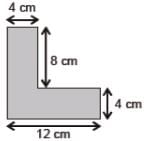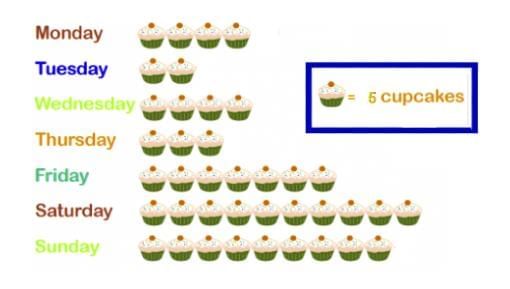Maths Olympiad Sample Paper 1 - Class 5 MCQ
30 Questions MCQ Test Math Olympiad for Class 5 - Maths Olympiad Sample Paper 1
There are 914 students enrolled in Lakeview Elementary School. Frederich Elementary School has 276 fewer students enrolled. How many students are enrolled at Frederich Elementary School?
In the figure, point O is the center of the circle. Which two points appear to make a diameter when connected with a straight line?


Tom left home at 7:15 a.m. to go to work. He returned home at 4:45 p.m. What is the total amount of time Tom was away from home?
Shilpa wants to dress up for a party. She has two pairs of jeans and four tops. In how many ways can she choose her dress?
If in a certain code language, REDDISH is coded as TGFFKUJ, then how will you code CARROT in that language?
Find the area of the shaded part of the rectangular strip of papers.

What would be the perimeter of the rectangle if its length is 7 cm and the area is 35 cm2?
The marks obtained by 40 students of a class in an examination are given below:
8, 47, 22, 31, 17, 13, 38, 26, 3, 34, 29, 11, 22, 7, 1, 24, 38, 31, 21, 35, 42, 24, 45, 23, 21, 27, 29, 49, 25, 48, 21, 15, 18, 27, 19, 45, 14, 34, 37, 34
How many students got the marks that are prime numbers?
If the radius of a circle is 17.89 m, then what would be its diameter in cm?
There are 45 animals in a pet shop. 23 of them are puppies, 6 of them are parrots, and the rest are kittens. How many kittens are in the pet shop?
Four players are playing a card game and all the cards have been equally divided among the four players.
If one player out of them has four cards of hearts, then what fraction of cards with him are cards of hearts?
The teacher pupil ratio in a school is 1 : 40. The number of boys is 4/5 the number of girls. There are 2400 girls. How many teachers are there in the school?
In a certain way, if 100 divided by 50 is 1, 270 divided by 90 is 2, then in the same way, what will 500 ÷ 100 be equal to?
There are 30 pupils in a class. Each boy brings 5 stickers and each girl brings 4 stickers. If all the boys bring 60 more stickers than all the girls, how many boys are there?
What is the number of digits that can come in place of the question mark to make it divisible by 9?
817 ? 218
The total mass of 3 adults Govind, Joy, and Vineet is 219.4 kg. Govind is 6.9 kg lighter than Vineet, and Vineet is 10.4 kg heavier than Joy. How heavy is Govind?
Amit can cover 100 km in 10 hours. How much distance can he cover in 15 hours?
The ratio of number of elephants to that of crocodiles in a zoo is 3 : 5. If there are a total of 160 elephants and crocodiles in the zoo, then find the number of elephants.
If the perimeter of a square is equal to the perimeter of a rectangle with length 10 units and breadth 8 units, then what will be the area of the square in sq. units?
Number X is a common multiple of 8 and 7. It is between 1100 and 1200. What is number X?
Raghav wants to fence his plot from all four sides. The cost of fencing is Rs. 30 per/metre and he pays Rs. 15,000 in all. What is the measure of the length (in metres), if it is 40 metres more than the breadth?
The pictograph below shows the number of cupcakes sold by a shopkeeper on different days in a week.

How many more cupcakes were sold on Saturday and Monday combined than on Sunday and Thursday combined?
If "CODING" is coded as "DPEJOH", then how will "PAGE" be coded?
|
32 videos|57 docs|45 tests
|




















